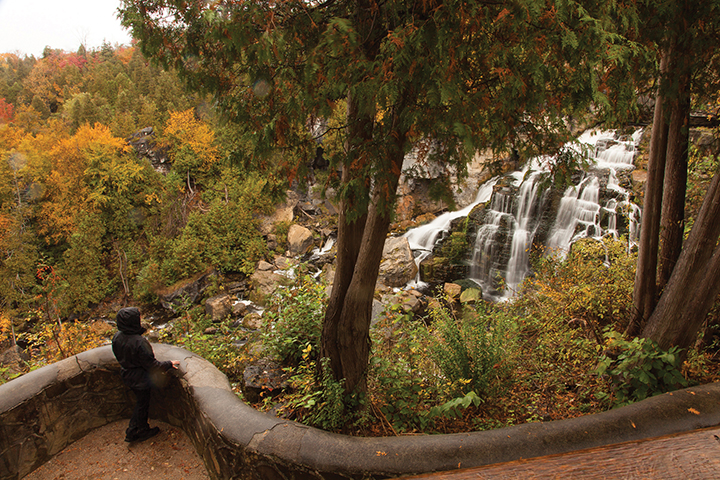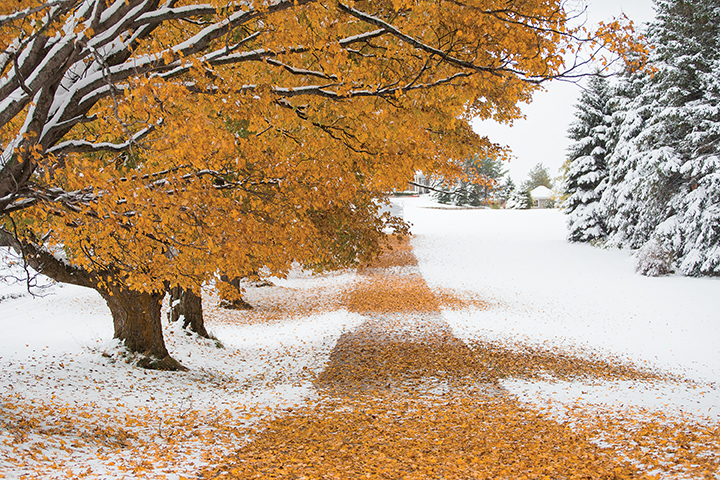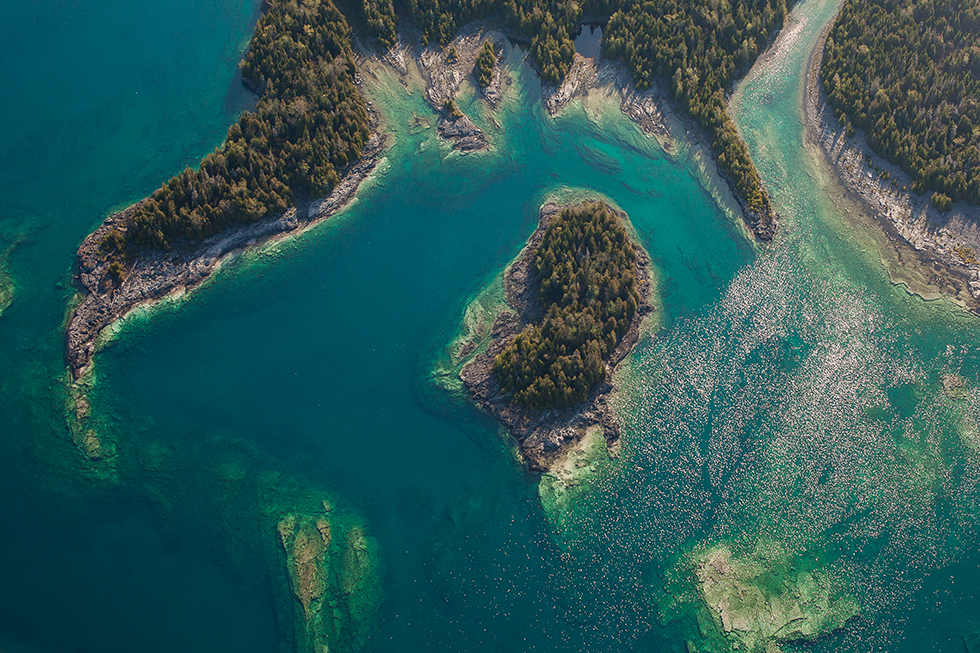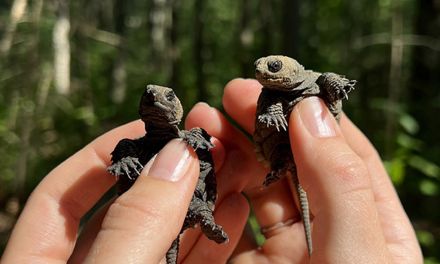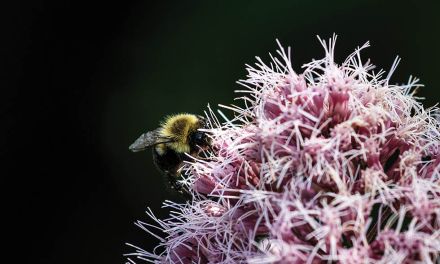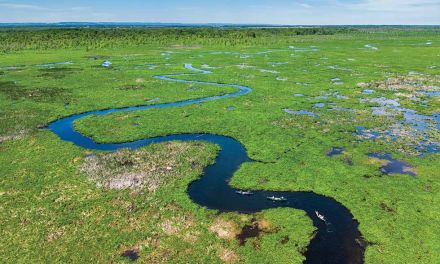Introduction | Cara Williams Photos & Story | Mark Zelinski
Winner of the Governor General’s Medal, Canadian photographer Mark Zelinski’s photography books have garnered international acclaim and have included forewords by HRH Prince Philip, His Majesty King Constantine and Justin Trudeau. Based in Hamilton, Mark’s lifelong appreciation of The Niagara Escarpment UNESCO World Biosphere Reserve inspired him to publish his ninth book, Heart Of Turtle Island: The Niagara Escarpment. This stunning collection of images and stories brings to focus the environmental treasures of the Escarpment, as well as the diverse native and settler communities that thrive along its rugged, curving path. Akin to Mark’s previous subjects including the Galapagos and the Serengeti, The Niagara Escarpment is acknowledged as one of the world’s unique natural wonders; its ecosystem supporting hundreds of at-risk species that coexist alongside the most densely populated and heavily developed region in Canada. Escarpment Magazine is pleased to feature several of Mark’s stunning photos and words from Heart Of Turtle Island: The Niagara Escarpment.
Indigenous people refer to the continent of North America as Turtle Island. The Haudenosaunee Confederacy, which consists of the Mohawk, Oneida, Onondaga, Cayuga, Seneca, and Tuscarora Nations tells that Mother Earth was created on the back of a giant turtle. To the Anishnaabe of the northern Escarpment, the map of North America actually looks like a turtle: Alaska the front left paw, Labrador the right, Baha Peninsula the hind left leg, Florida the right, Mexico the tail and the Canadian Arctic island the head of the turtle. The Escarpment is a huge arc, the backbone of the Great Lakes, running from New York State through Ontario, Manitoulin Island, under Lake Huron and Lake Michigan to Wisconsin: so this Escarpment arc is the heart of North America or “Turtle Island”.
In 2012, after completing a 38 year sojourn across 80 countries to complete and distribute the three books that comprised my “Books That Heal” initiative, my attention returned to the lands where I first learned to look at the world. Some of my earliest memories are of exploring the lands of the Niagara Escarpment: my early work as a painter and filmmaker was inspired by the ancient trees, cliffs, potholes and waterfalls that had become my friends as a child. As this new study of the Escarpment began, I expected it to be a fairly short run, not having to travel too far for my subject matter. But the more I looked at The Escarpment the more layers of its story became apparent, not unlike the half-billion year-old saga that these layers of rock will reveal to a discerning geologist.
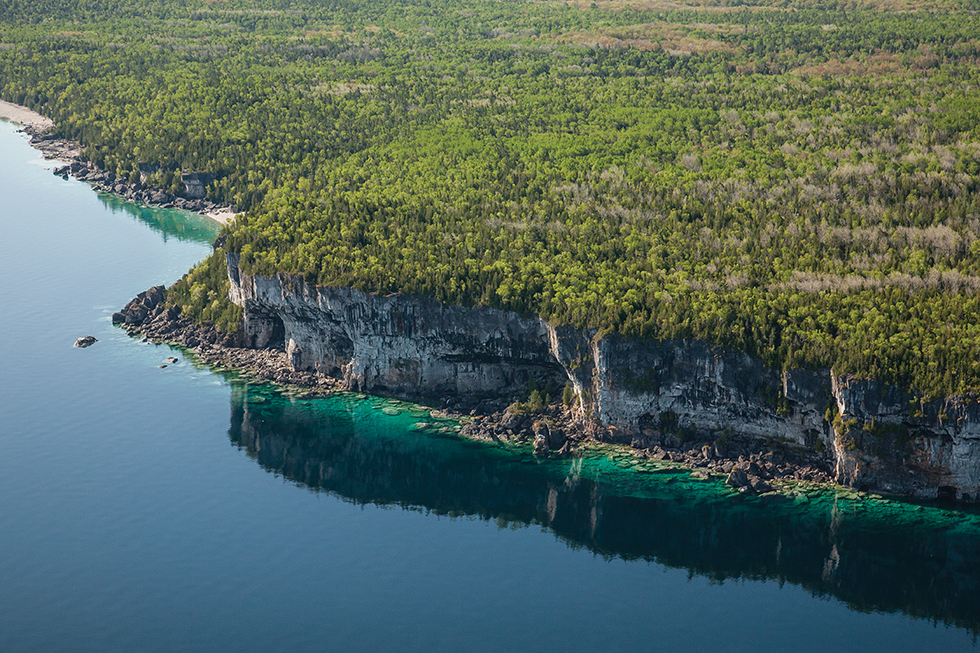
The Escarpment is actually an ancient coral reef, which lay at the bottom of a warm shallow sea at the center of Earth’s first continent, Pangea, 450 million years ago. Shifting tectonic plates pushed the fossilized reef upward to become a mountain range, which was then shaved by 30 ice ages into the flat-topped escarpment of the present day. As I followed that slow-moving story of this ancient landform, I realized that the most recent chapter of its epic tale was best understood by an examination of the more fleeting life forms that now thrive in its diverse ecosystems. The pages in this book present the enormous abundance of flora and fauna to be found on and near the Escarpment, including one of the newest species to call it home – humans.
I made it my mission for the next five years to photographically capture the settlements that have changed, and that have been changed by their close proximity to the Escarpment. It was a pleasure to delve into the communities of Beaver Valley, Blue Mountains, Owen Sound and The Bruce Peninsula – all well represented in photos and text. In fact, this project received wide support from the southern Georgian Bay area, with Blue Mountain Resort, Blue Mountain Watershed Trust, Coffin Ridge Winery, Owen Sound Transportation Company, Bruce Peninsula Biosphere Association, the City Of Owen Sound, Municipality of Northern Bruce Peninsula and other local sponsors coming on board to advance purchase the book.
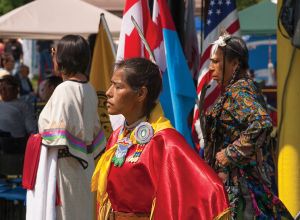 What I had not expected to find was so many First Nations thriving on these lands near where I was born. From the Maasai and Kadazan to the Inuit and Ashaninka, my world travels have connected me to a myriad of Indigenous peoples; and so it was exciting to explore these local Indigenous communities.
What I had not expected to find was so many First Nations thriving on these lands near where I was born. From the Maasai and Kadazan to the Inuit and Ashaninka, my world travels have connected me to a myriad of Indigenous peoples; and so it was exciting to explore these local Indigenous communities.
The aboriginal word Niagara translates to “big noise”. Before European contact, the flow of Niagara Falls was reported to be around 25 feet deep at the edge, producing a thunderous roar and trembling earth. For thousands of years ancient trails crisscrossed the high ridge, connecting trade routes and offering views of distant herds. In pre-Columbian times the multicultural nations of native people envisioned this continent, Turtle Island, as the place where all the races and colours of The Medicine Wheel will gather with their gifts. It has been a privilege to photograph the ceremonies, communities and homes of many nations of Ontario, and even more of a privilege that three Indigenous writers and teachers have written the chapter text for the three chapters about the original people of this area.
Like the Galapagos and the Serengeti, The Niagara Escarpment is designated as a UNESCO World Biosphere Reserve. One of the world’s unique natural wonders, The Escarpment defines an area across Southern Ontario and Manitoulin Island. Its ecosystems support hundreds of at-risk species that coexist alongside the most densely populated and heavily developed region in Canada. Ancient white cedar trees, some more than 1,000 years old, cling to its cliff face ecosystems: creeks and rivers cascade from its cliffs, meandering through forests, fields and wetlands that support rich biodiversity. Its ancient geology provides the foundation for Southern Ontario’s infrastructure and Greenbelt. Thanks to the unique soils and microclimate of the Escarpment, the Niagara Peninsula and southern Georgian Bay have become a major fruit growing and wine region with related culinary and cultural tourism benefits. The population of its towns and cities are as varied as the landscape; a blend of cultures is the heart of our communities.
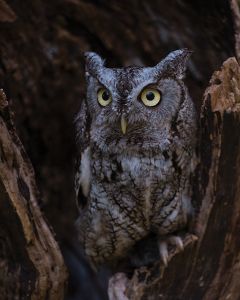 Continued development in this region is inevitable, and I often wonder if we will we have the wisdom to not repeat our environmental mistakes of the past. Heart Of Turtle Island: The Niagara Escarpment has been created to familiarize a new generation of Canadians with the Escarpment, its geological, cultural, environmental significance and the importance of using these lands wisely to ensure its protection for future generations. It is also a tribute to the work and ideals of growing legions of individuals and organizations that that strive to protect The Niagara Escarpment. The release of the book also commemorates Canada’s oldest and longest footpath during its fiftieth anniversary: for half a century, The Bruce Trail Conservancy has worked to acquire and protect lands that access the Niagara Escarpment. These pages showcase the spectrum of parks and conservation lands including Bruce Peninsula National Park, Fathom Five Marine Park, Cootes To Escarpment Ecopark and the protected lands managed by seven Conservation Authorities along the Escarpment.
Continued development in this region is inevitable, and I often wonder if we will we have the wisdom to not repeat our environmental mistakes of the past. Heart Of Turtle Island: The Niagara Escarpment has been created to familiarize a new generation of Canadians with the Escarpment, its geological, cultural, environmental significance and the importance of using these lands wisely to ensure its protection for future generations. It is also a tribute to the work and ideals of growing legions of individuals and organizations that that strive to protect The Niagara Escarpment. The release of the book also commemorates Canada’s oldest and longest footpath during its fiftieth anniversary: for half a century, The Bruce Trail Conservancy has worked to acquire and protect lands that access the Niagara Escarpment. These pages showcase the spectrum of parks and conservation lands including Bruce Peninsula National Park, Fathom Five Marine Park, Cootes To Escarpment Ecopark and the protected lands managed by seven Conservation Authorities along the Escarpment.
Indigenous readers claim that the land itself speaks through these photographs; the images combine with the words of conservationists, scientists, and residents of both ancient and settler communities, to offer a multi-layered perspective of the living Escarpment. For millennia, plants, birds, animals, and human enterprise have coexisted in its bounty. Its ancient limestone naturally purifies the water that runs through it. Its health offers us a reflection of our own health. The Niagara Escarpment is a living symbol of the immense scope of planetary time and majesty, a gift to enjoy with respect and gratitude during our brief visit here on Turtle Island. |E|
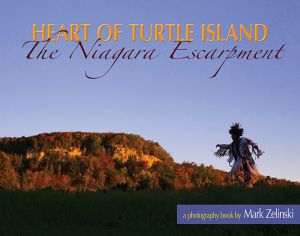 Heart Of Turtle Island: The Niagara Escarpment is available online at www.MarkZelinski.com
Heart Of Turtle Island: The Niagara Escarpment is available online at www.MarkZelinski.com
and in select stores throughout Simcoe, Grey and Bruce Counties. In keeping with Mark’s philanthropic endeavors, a percentage of profits from sales will be donated to Royal Botanical Gardens and to The Bruce Trail Conservancy. Mark’s “Books That Heal” initiative has already donated over 7,000 books to charities worldwide.
Indigenous readers claim that the land itself speaks through these photographs; the images combine with the words of conservationists, scientists, and residents of both ancient and settler communities, to offer a multi-layered perspective of the living Escarpment. For millennia, plants, birds, animals, and human enterprise have coexisted in its bounty. Its ancient limestone naturally purifies the water that runs through it. Its health offers us a reflection of our own health. The Niagara Escarpment is a living symbol of the immense scope of planetary time and majesty, a gift to enjoy with respect and gratitude during our brief visit here on Turtle Island. |E|


